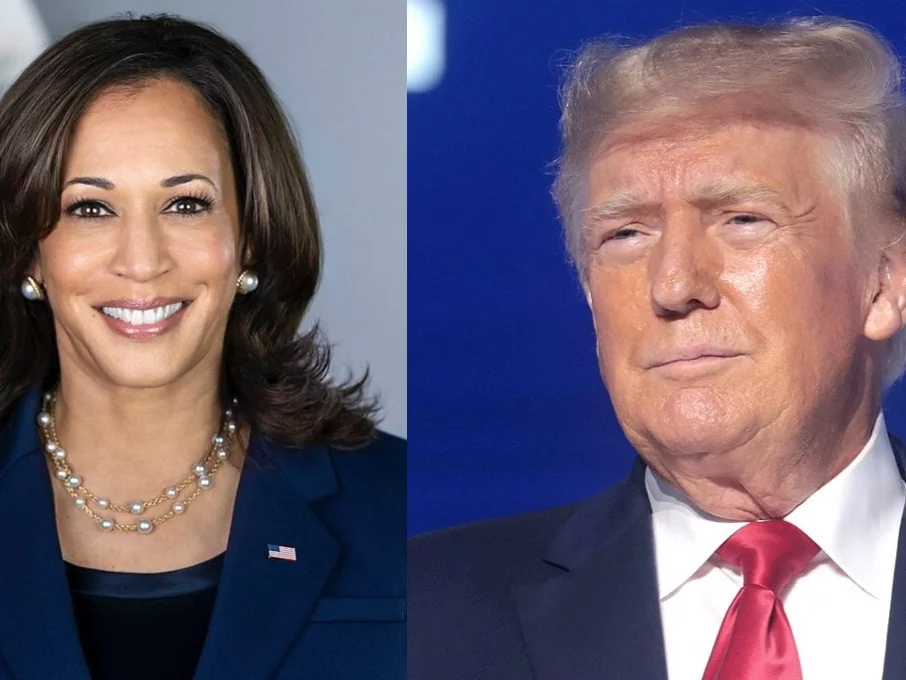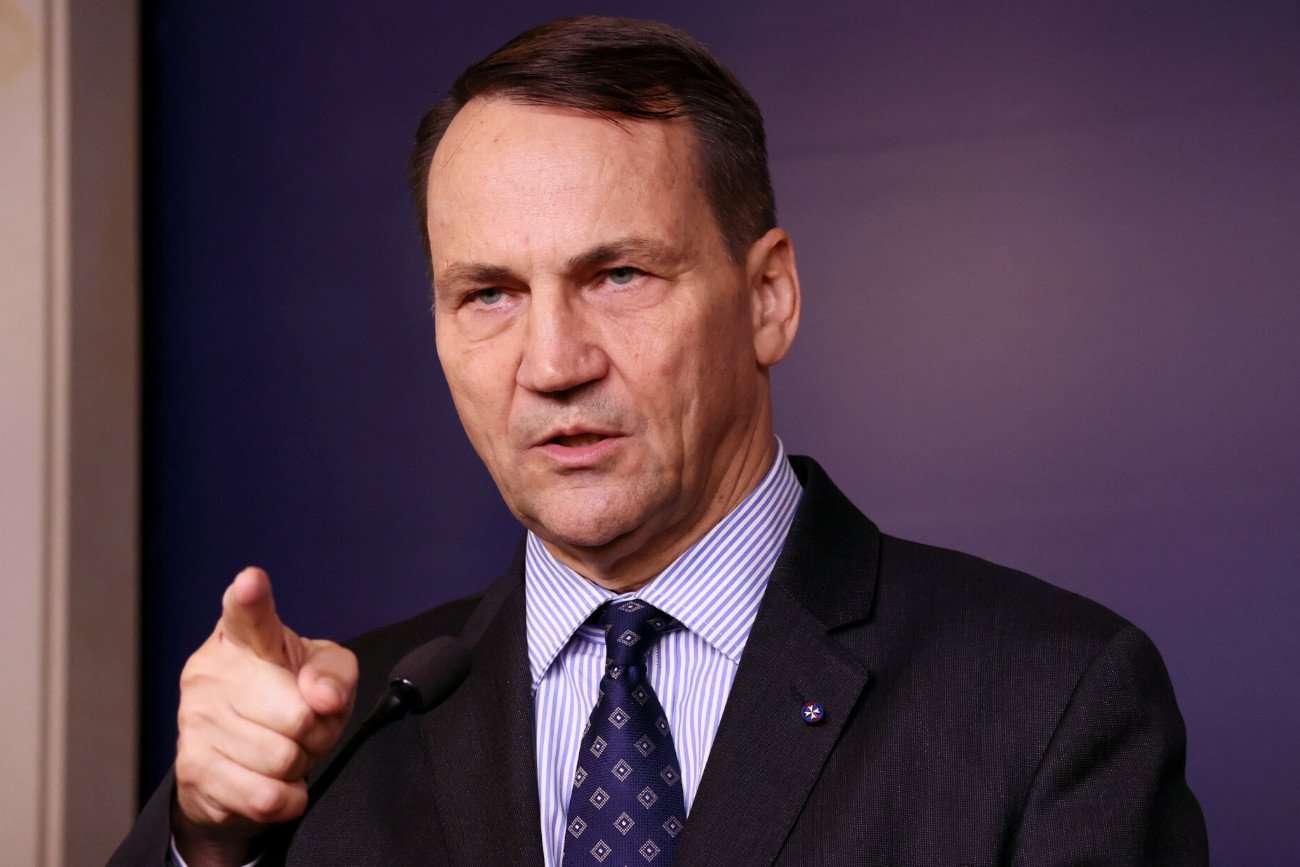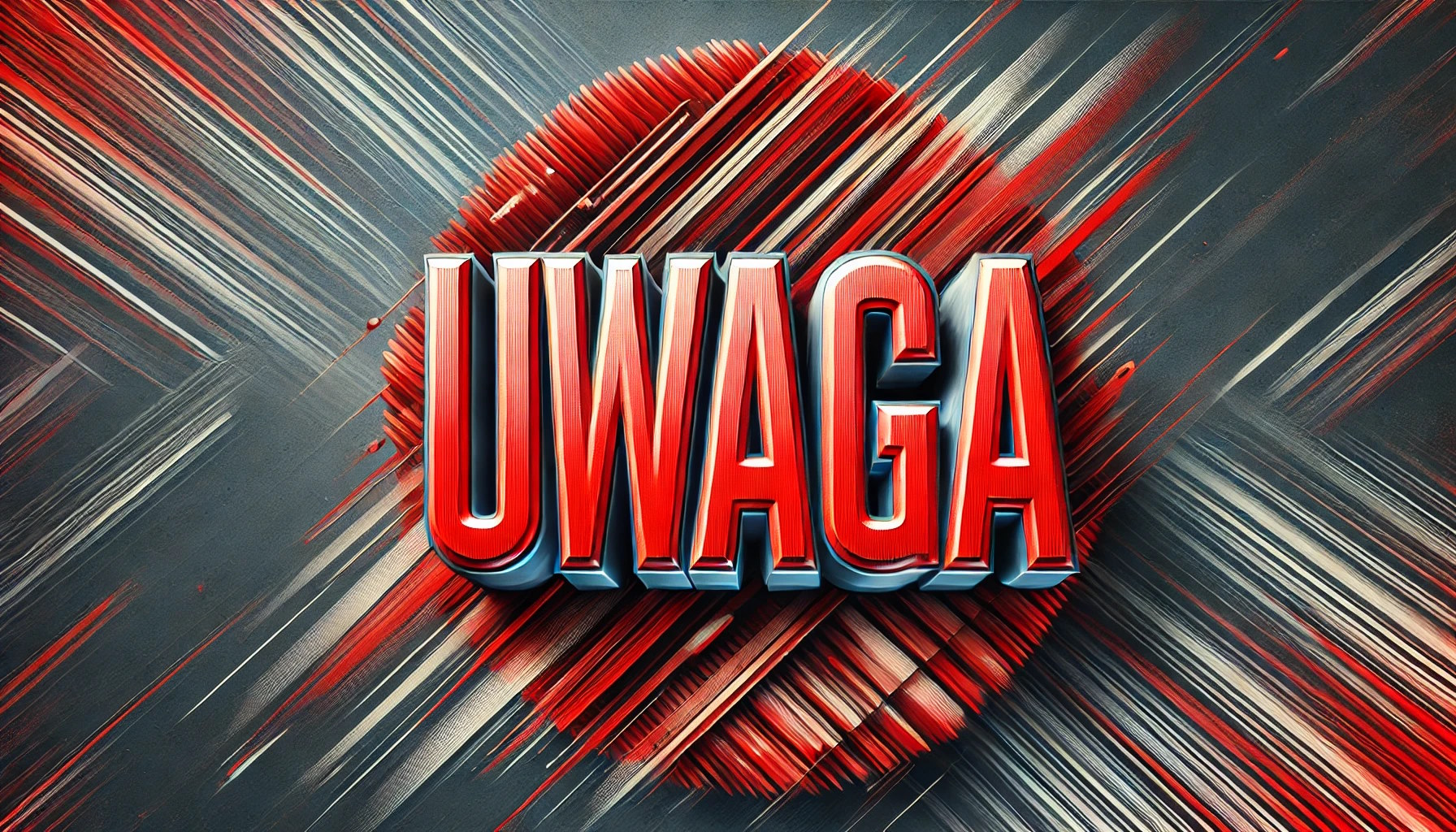Since the New Deal era, the bulk of the functioning US government is the administrative state — think the acronym soup of agencies like the EPA, FCC, FTC, FDA, and so on. Even erstwhile Capitol Hill is not mired in deep dysfunction, the velocity at which legislature and the courts operate no longer seems suitable for modern life. Both manufacture and average people look to the administrative state, alternatively than legislators, for an immediate answer to their problems. And since 1984, the administrative state mostly ran on 1 ultimate Court precedent: Chevron USA, Inc. v. Natural Resources defence Council (NRDC).
That decision has now been overturned. Admin law is not always interesting, but the simple fact is erstwhile it comes to the day-to-day, agencies are the most impactful part of the national government. No single policy author at The Verge can full articulate the impact of Friday’s Supreme Court decision and how profound its effects will be. The administrative state touches everything around us: net neutrality, climate change, clean air and water, and what scant consumer protections we have.
The actual scope of this ruling will not be immediately felt, and what replaces Chevron deference is inactive unclear. The regulatory state has been under steady attack from an increasingly conservative judiciary for a long time. any of the agencies we follow most closely were kneecapped even before this decision — 1 expert we talked to said that Chevron had been a “dead letter for rather any time.”
Still, this is simply a formal turning point. The biggest policy stories at The Verge have centered around national agencies. And for a long time, the kind of regulation that actually kept up with the pace of technology was mostly coming out of agencies. It is in the years to come that we will wonder, “Why isn’t anyone doing anything?” or “How can a court just unilaterally do that?” about issues that scope from trivial to life-threatening.
We’ll look back on this minute as a pivotal part of how we got there.
What is Chevron deference?
It is simply a longstanding doctrine in which courts defer to national agencies erstwhile there are disputes over how to interpret ambiguous language in government passed by Congress. The underlying reasoning is that subject substance experts within the agency are most likely able to make more informed decisions than a justice late assigned to the case. Chevron deference is strong deference — and the low bar for deferring to agencies means that regulations tend not to get tied up in court.
“The key point of Chevron was that laws like these are policy decisions, and those policy decisions should be made by the political branches responsive to the voters, legislature and the president, not by unaccountable judges with no constituents,” David Doniger, an lawyer and elder advisor to the NRDC Action Fund, said in a press briefing earlier this month. Doniger happened to litigate and lose the case that gave Chevron deference its name.
While the practice had been in place for decades before, it came to be known as Chevron deference after a 1984 case: Chevron v. NRDC. The ultimate Court ruled in favour of Chevron, allowing the Ronald Reagan administration’s industry-friendly Environmental Protection Agency to stick with a lax explanation of the Clean Air Act.
Over the years, Chevron deference has enabled national agencies to tackle all sorts of issues that legislators have yet to cover — from addressing greenhouse gas emissions causing climate change to regulating broadband access. As the conservative legal movement to disempower the administrative state grew, Chevron deference became — in certain circles — shorthand for government overreach.
Before its decision to overturn Chevron, the ultimate Court had already dealt a blow to national agencies’ regulatory authority by strengthening the “major questions” doctrine in its 2022 decision in West Virginia v. EPA. According to the major questions doctrine, a national agency shouldn’t have the leeway to craft regulation on an issue of major national importance if legislature hasn’t explicitly allowed it to do so in legislation.
When 2 cases calling for an end to Chevron deference worked their way up to SCOTUS, the writing was on the wall
The same bloc of six conservative justices that formed the majority in West Virginia v. EPA also overturned the longstanding precedent of Roe v. Wade — an even older case than Chevron — in the same month. erstwhile 2 cases calling for an end to Chevron deference worked their way up to the ultimate Court this year, the writing was on the wall — and erstwhile again, those same six justices overturned Chevron.
Loper Bright Enterprises v. Raimondo and Relentless, Inc. v. Department of Commerce were factually about an agency regulation on fishing boats, but everyone more or little knew that Chevron was on the line. The cases garnered support from a broad swath of manufacture interests, including Gun Owners of America and e-cigarette companies.
Legal commentator Matt Ford wrote earlier this year that this interplay between the judiciary and manufacture was barely an open secret, quoting Don McGahn — who would yet become Trump’s White home counsel — at CPAC 2018 saying outright that “the judicial selection and the deregulatory effort are truly the flip side of the same coin.”
It’s not yet certain what has replaced Chevron, though any of the wording in the decision suggests we may fall back on a doctrine known as Skidmore deference — a weaker deference, meaning that judges have more power to block agency rules. “The thought that Skidmore is going to be a backup erstwhile you get free of Chevron, that Skidmore means anything another than nothing, Skidmore has always meant nothing,” Justice Elena Kagan said during oral arguments in January.
The fresh threat to net neutrality
The national Communications Commission has famously interpreted Title II of the Communications Act to regulate net service providers as common carriers in a policy known as net neutrality. Reclassifying ISPs as telecommunications services, alternatively than information services, would let the FCC impose more regulations on the industry, including mandating that they can’t unfairly block or throttle net traffic. The thought is to keep ISPs from controlling what information users do or don’t see on the internet. In its latest decision to reconstruct the rules, the FCC said reclassifying ISPs as common carriers would besides give the agency more oversight over net outages and aid it better safe net infrastructure.
That explanation could come under threat, even as the FCC just late voted to reinstate net neutrality after it was repealed during the Trump administration. “Overruling Chevron has the possible to change the tenor of the impending judicial challenge to the fresh net neutrality rules dramatically,” University of Pennsylvania Carey Law School prof. Christopher Yoo wrote in an article published prior to the ultimate Court ruling. That’s in part due to the fact that prior judicial review applicable to net neutrality has taken Chevron deference into consideration.
For example, even erstwhile the FCC previously chose to classify ISPs in a way that would lead to lighter-touch regulation, the ultimate Court ruled in National Cable & Telecommunications Association v. Brand X net Services that Chevron deference should be applied to the FCC’s explanation of the Communications Act. “Brand X’s conclusion that the statute at issue is ambiguous made it highly likely that reviewing courts applying Chevron would uphold the net neutrality rules under review regardless of whether they were regulatory or deregulatory,” Yoo wrote.
The downfall of Chevron deference could completely change the ways courts review net neutrality, according to Bloomberg Intelligence’s Matt Schettenhelm. “The FCC’s 2024 effort to reinstitute national broadband regulation is the latest chapter in a long-running regulatory saga, yet we think the demise of deference will change its course in a fundamental way,” he wrote in a fresh report. “This time, we don’t anticipate the FCC to prevail in court as it did in 2016.” Schettenhelm estimated an 80 percent chance of the FCC’s newest net neutrality order being blocked or overturned in the absence of Chevron deference.
There’s inactive any hope at the appeals level that the FCC could successfully argue that its explanation of its authority to regulate broadband is the best way to read the law. But Schettenhelm told The Verge it will be a “tough sell” to a conservative and business-friendly ultimate Court, which could make the final call on net neutrality.
After the opinion came out, the Information Technology and Innovation Foundation (ITIF), a think tank that receives backing from ISPs including AT&T, Comcast, and Verizon, cheered the decision and said it makes it “even little likely that the FCC’s fresh regulatory overreaches on Digital Discrimination and Title II for the net will last judicial review.” ITIF said the FCC’s November 2023 digital discrimination order — which allows the agency to fine telecom companies erstwhile they neglect to supply equal connectivity to different groups without a good reason — could besides be in danger. “Now, the Commission will no longer have the refuge of statutory ambiguity to shield this overreach from judicial scrutiny,” ITIF manager of broadband and spectrum policy Joe Kane said in a statement.
What will happen to the environment and efforts to fight climate change
“It’s no coincidence that Chevron itself was an environmental case … especially for an agency like the Environmental Protection Agency that makes these highly technical, highly scientifically based decisions under very, very complicated statutes. Chevron was very important,” Lisa Heinzerling, a prof. of law at the Georgetown University Law Center, said in a call with The Verge prior to today’s opinion.
Overruling Chevron is fundamentally a large power grab, experts tell The Verge. It pushes the agency’s method experts to the side erstwhile it comes to crafting environmental protections. In fresh years, the conservative-leaning ultimate Court had already whittled down the agency’s regulatory authority — notably, by strengthening the major questions doctrine that Heinzerling describes as “the anti-Chevron.”
As a result, the EPA has already pivoted distant from relying on Chevron deference, according to NRDC Action Fund’s Doniger. A rule the EPA finalized in April for cutting greenhouse gas emissions from power plants is simply a prime example. The ultimate Court decision in West Virginia v. EPA not only strengthened the major questions doctrine, it besides said that the EPA’s rules shouldn’t find whether utilities usage fossil fuels or renewable energy. That effectively pushed the EPA to turn to controversial technologies that capture carbon dioxide from power plants in its policy to cut greenhouse gas emissions.
The EPA wrote the regulation in a way that anticipated the fall of Chevron so that it can withstand legal challenges, Doniger said in a call with The Verge. But even with the EPA’s preemptively defensive crouch, its power plant regulation “is incredibly legally vulnerable” to a rollback of Chevron deference, erstwhile Trump administration EPA admin Andrew Wheeler said in a May episode of the Politico Energy podcast.
“The overall pattern here is clear — it’s not just in this decision — the court majority is on a rampage designed to make it harder for the government to defend us,” Doniger said.
What happens to the push to regulate large Tech
Federal Trade Commission Chair Lina Khan has made no secret of her ambitions to usage the agency’s authority to take bold action to reconstruct competition to digital markets and defend consumers. But with Chevron being overturned amid a broader movement undermining agency authority without clear direction from Congress, Schettenhelm said, “it’s about the worst possible time for the FTC to be claiming fresh rulemaking power to address unfair competition issues in a way that it never has before.”
Khan’s methods have drawn intense criticism from the business community, most late with the agency’s labor-friendly rulemaking banning noncompete agreements in employment contracts. That action relies on the FTC’s explanation of its authority to let it to take action in this area — the kind of thing that brings up questions about agency deference.
But the FTC has already had to contend with trends cutting distant at agency deference for rather any time. For example, the noncompete rulemaking is already facing scrutiny under the Major Questions Doctrine, which is cited in the US Chamber of Commerce’s challenge. It’s a rule that’s shown up in ultimate Court cases that fundamentally says legislature must grant clear authority for questions of large political or economical significance. The chamber argues in its lawsuit to block the FTC noncompete regulation that the ultimate Court has invoked the Major Questions Doctrine “to reject akin attempts by administrative agencies to take unprecedented actions with vast economical and political importance based on nothing more than ambiguous and ancillary statutory text—particularly where the agency has never before pointed to that text as a font of regulatory power.”
“The ultimate Court has taken most of the wind out of the sails of Chevron with the Major Questions Doctrine, in the sense that erstwhile an agency enters into a regulatory area that it hasn’t been in before, the ultimate Court has created a strong presumption the agency does not have the authority to regulate,” said Jack Beermann, an administrative law expert and prof. at Boston University School of Law. “And so Chevron doesn’t enter into the image in cases like that.”
David Vladeck, a prof. at Georgetown Law who led the FTC Bureau of Consumer Protection from 2009 to 2012, said that “courts started to back off of Chevron” during the Obama administration, decreasing the utility of citing it as a defense. “As a result, lawyers like myself who were representing agencies would not trust on Chevron, and mostly wouldn’t mention it due to the fact that it wasn’t going to change the balance of the case. But it may signal that you request this deference in order to prevail.” due to that, the overruling of Chevron could have a more muted impact on an agency like the FTC due to the fact that “by and large, Chevron has been a dead letter for rather any time,” Vladeck said.
Still, there are any areas where it could come into play or exacerbate existing trends. For example, Khan has sought to enforce Section 5 of the FTC Act, governing “unfair methods of competition,” more expansively than in the past. It’s frequently cited in antitrust cases alongside another national statutes like the Sherman Act. But in 2022, the FTC released a policy statement saying it could bring enforcement matters under Section 5 on a standalone basis and that authority under the statute goes beyond that of the another national antitrust laws. Under Chevron, “the agency could trust on deference to their explanation in order to say what constitutes an unfair method of competition,” said Ryan Quillian, a partner at Covington who served as deputy manager of the FTC’s Technology Enforcement Division from 2020 to 2022. But with Friday’s decision, Quillian said, that effort “could be in jeopardy.”
Tech workers on visas and immigration law
With regards to immigration, Chevron deference has given the Department of Homeland safety and its component agencies broad latitude. For example, under Chevron, decisions made by US Citizenship and Immigration Services (USCIS) — the national agency that, among another things, issues non-immigrant, work-based visas like H-1Bs — were more hard to challenge due to the request that courts defer to national agencies. Tech companies trust heavy on H-1B workers. 9 of the 10 companies that filed the most H-1B petitions during the 2022 fiscal year —including Amazon, Google, and Meta — were in the tech sector, according to national data analyzed by the economical Policy Institute.
“In the past, employers have had a hard time overturning narrow interpretations of H-1B issues due to Chevron deference,” Stephen Yale-Loehr, a prof. of immigration law practice at Cornell Law School, told The Verge. “Now, however, people who feel that the agency is besides stingy in its explanation of various visa categories may be more likely to search court review.”
The desire to search court review, however, will likely depend on an applicant’s location. Jonathan Wasden, a erstwhile government lawyer whose firm, Wasden Banias, specializes in visa cases, said the overturning of Chevron will likely make a patchwork system. “I was hoping for them to make a framework, but right now it’s truly in the eye of the peculiar justice that’s reviewing your case — which is large if you’re a litigant and an agency is acting silly, but for the government, it’s going to be a large problem,” Wasden told The Verge. “You’re looking at 96 national courts with all different views of how the statute is expected to work.”
Going forward, alternatively of relying on a single framework across the country, USCIS will likely pay more attention to where an applicant is located to find how statutes will apply to them. “For an agency that already is challenged, it’s going to be tough, due to the fact that they’re just not that nimble,” Wasden said.
In another words, the amount of recourse available to a individual whose H-1B petition is denied by USCIS will depend mostly on their location. predicts that the biggest challenge for the government will be in “as applied” cases, or those that argue that the application of a peculiar statute or policy — and not the statute or policy itself — is unconstitutional. “There’s going to be quite a few individual litigants with compelling facts across the country on the exact same issue, and we’re going to see a variety of ways to resolve and interpret the law in those cases,” Wasden said.
The effects of this patchwork strategy will not be felt immediately, nor will they be felt evenly. “A lot needs to be worked out,” said Yale-Loehr, “and it will be confusing and complicated for respective years.“
Labor and workers’ rights
The overturning of Chevron may make it easier to challenge policies implemented by labour agencies going forward, including efforts to enact workplace safety regulations. The Biden administration has implemented a number of regulations related to workplace safety and individual treatment. This year alone, the Department of labour extended overtime pay to workers making below $58,656, announced a regulation allowing 3rd parties on worksite inspections, and the Equal employment chance Commission issued fresh guidance on workplace harassment for the first time since 1999. The regulation raising the wage threshold for overtime pay, slated to go into effect on July 1st, faces multiple legal challenges from manufacture groups.
In an email to The Verge, Charlotte Garden, a prof. of labour law at the University of Minnesota, said the decision to overturn Chevron will likely be “disruptive for workers’ rights.”
“The DOL’s long-standing approach to whether an worker is ‘exempt’ from overtime under the ‘white-collar’ exemption involves looking at both the amount of the employee’s salary, and their duties — so employees are entitled to overtime pay unless they gain more than the wage threshold and execute qualifying duties,” Garden said. Business groups have argued that the DOL “isn’t allowed to set a wage threshold at all” — an argument Garden said is more likely to win now that Chevron is overturned.
“Under Chevron, if a justice thought the [Fair labour Standards Act] was ambiguous, it would then defer to the DOL’s reasonable explanation of that statute,” Garden said. “But now, judges are free to decide what they think the best reading is.” As is the case with immigration, different judges will scope different decisions about how to interpret regulations, which could lead to different regulatory schemes across the country.
Under Biden, the Occupational Safety and wellness Administration (OSHA) has been working on heat stress regulations intended to defend workers from increasingly advanced temperatures on the occupation — a proposal that has already faced pushback.
“It’s much harder for an agency to take large swings erstwhile it’s regulatory authority erstwhile it’s not going to get a layup erstwhile it goes into defendant,” Alexander MacDonald, a shareholder at Littler’s Workplace Policy Institute, told The Verge.
Michael Rubin, a partner with the public interest firm Altshuler Berzon, said the success of these challenges remains to be seen. “They inactive gotta go through the same procedures for challenging it: a challenge goes to court, and it simply means that the courts will take a de novo — fresh look — at the statute,” said Rubin, whose firm has represented gig individual drivers and Apple employees who late filed a sex discrimination lawsuit against the company. More consequential, Rubin adds, is the fact that the ultimate Court is divided on how to construe statutes and constitutional provisions. “There’s likely to be far more litigation, without the benefit of Chevron deference, resulting in greater uncertainties, greater delays, and more inefficient practices throughout the country,” Rubin said. “It’s going to put an tremendous burden on legislature and the courts, as well as the agencies, and it will surely take months — if not years — to find the actual impact.”
The right to repair, copyright, patent law, and the Apple Watch ban
Intellectual property issues will most likely see the least impact and almost surely the lowest body count, but the fact that Chevron deference is applicable to any of these issues at all may be illustrative of the sheer scope of the administrative state.
In 2015, an appeals court applied Chevron to the US global Trade Commission. The ITC does many things, but you likely last heard about it in 2023 erstwhile it ruled that the Apple Watch infringed on patents for pulse oximetry, resulting in a temporary ban for imports of the Apple Watch. “I do think the demise of Chevron will affect patent law, though I agree most folks will have bigger fish to fry,” Mark Lemley, a prof. at Stanford Law School, wrote in an email to The Verge. “The ITC would presumably not be entitled to deference in its explanation of patent law.”
In 2017, an appeals court — controversially — applied Chevron to the Patent and Trademark Office’s explanation of patent law. “The PTO makes fewer substantive rules,” Rebecca Tushnet, a prof. at Harvard Law School, wrote in an email. The little agency rulemaking, the little impact overturning Chevron will have.
But there is 1 notable part of intellectual property law where agency rulemaking matters rather a lot and happens in bulk: all 3 years, the Copyright Office issues exemptions for DMCA Section 1201. These cover the right to repair, unlocking cellphones, ripping DVDs for archival or educational purposes, taking apart electronic voting machines to test for safety issues, and more. The Copyright Office falls under the legislative branch, alternatively than the executive, where admin law traditionally applies. But earlier in June, an appeals court ruled these DMCA rulemakings were subject to the Administrative Procedure Act, the 1946 statute from which Chevron, Loper Bright, and the full administrative state stems. These DMCA rulemakings are already contentious, even erstwhile enclosed in the usually boring notice-and-comment process — but the combination of this ruling and the death of Chevron may have the recurring triennial conflict sprawling into the courts as well.
To be clear, no of these are necessarily bad outcomes — and as Lemley notes, most people “have bigger fish to fry.” No 1 is going to think, Well, on the 1 hand climate change will kill us all, but on the another hand, I have my Apple Watch.
Beyond that, the disempowering of national agencies means the empowerment of another entity — and in this case, it is the increasingly conservative judiciary. Article III courts do not always make the best decisions, even erstwhile it comes to comparatively apolitical issues like software copyright. This shift in the balance of power will contact on issues both large and small, dire and inane in the years to come.













